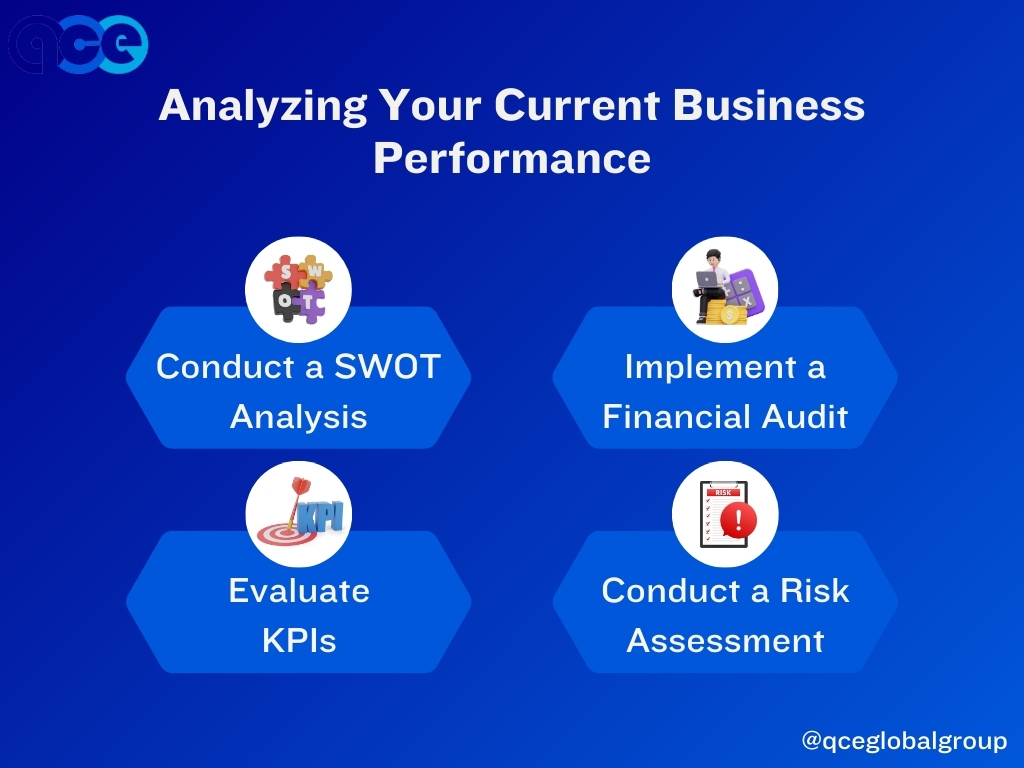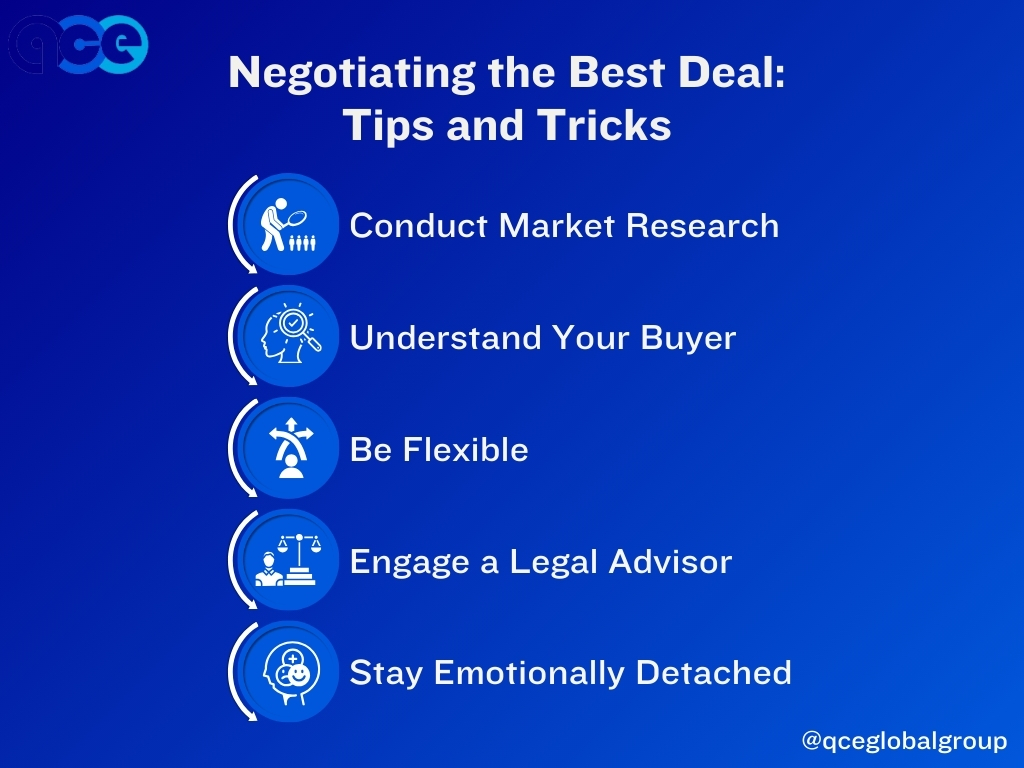Ready to master the art of flipping a business?
Understanding the process can be complex and time-consuming, but with our expert guidance, you can unlock the potential of an underperforming business, transforming it into a profitable venture.
The concept of flipping a business involves purchasing an underperforming or undervalued company, making improvements, and selling it for profit. This process requires in-depth knowledge in management, marketing strategies, financial analysis, and industry trends. Analyzing the current business performance is crucial before identifying potential areas of improvement. Strategies to increase business value may include diversifying product offerings, investing in marketing, leveraging technology, and reducing costs.
Attracting buyers requires effective marketing and careful negotiations. Legal aspects such as sales agreement, compliance with laws, protecting intellectual property rights, and managing tax implications are also important. After the sale, the transition period must be managed effectively to ensure smooth operations. With the right approach and commitment, flipping a business can be a profitable venture.
Table of Contents
- Understanding the Concept of Flipping a Business
- Analyzing Your Current Business Performance
- Identifying Potential Areas for Improvement
- Strategies to Increase Your Business Value
- How to Attract Buyers: Effective Marketing Techniques
- Negotiating the Best Deal: Tips and Tricks
- Understanding Legal Aspects of Selling a Business
- Managing Transition Period After Selling Your Business
- Real-life Examples of Successful Business Flips
- Final Thoughts
Understanding the Concept of Flipping a Business
Flipping a business is an entrepreneurial strategy that involves purchasing an underperforming or undervalued company, implementing improvements, and then selling it at a profit. This concept is similar to the real estate flipping practice where investors buy properties, renovate them for added value, and sell them off at higher prices. However, business flipping requires more in-depth knowledge of management, marketing strategies, financial analysis, and industry trends.
The process begins with identifying potential businesses that may be available for purchase. These can be found through various channels including online marketplaces like BizBuySell or Flippa, networking events, or direct outreach to business owners. Once potential targets have been identified, due diligence is carried out to assess their financial health and potential growth opportunities.
Analyzing Your Current Business Performance

Before you can flip your business successfully for profit, you need to thoroughly understand its current performance. This includes analyzing your financial statements such as income statements, balance sheets, and cash flow statements. Look closely at revenue growth rates, gross margins, and net profits. Assess whether these figures are improving over time.
In addition to financial metrics, evaluate operational aspects such as customer satisfaction levels through surveys or feedback forms, employee morale by conducting staff interviews, efficiency of operations by monitoring workflow processes, and the effectiveness of marketing campaigns by tracking KPIs like conversion rates, etc.
Here are the 10 Ideas for Analyzing Your Current Business Performance Before Flipping It for Profit:
- Conduct a SWOT Analysis: This can help you understand your business’s strengths, weaknesses, opportunities, and threats. It’s a comprehensive way to evaluate all aspects of your business.
- Implement a Financial Audit: Hire an external auditor to review your financial statements. This can provide an unbiased view of your financial performance and credibility.
- Use Business Intelligence Tools: Use software to track and analyze data on sales, customer behavior, and market trends. This can help you spot patterns and make informed decisions.
- Evaluate Key Performance Indicators (KPIs): Identify and monitor the critical success factors for your business. These could include sales growth, customer retention rates, or profit margins.
- Conduct Customer Satisfaction Surveys: Regularly seek feedback from your customers to understand their satisfaction levels and identify areas for improvement.
- Monitor Employee Performance: Regularly review your staff’s performance to assess their productivity and morale. This can help you identify any potential issues early on.
- Review Your Marketing Strategy: Evaluate the success of your marketing campaigns by looking at conversion rates, customer acquisition costs, and return on investment.
- Competitor Analysis: Understand your competition and their strategies. This can help you identify gaps in your own strategy and make necessary adjustments.
- Analyze Your Supply Chain: Evaluate the efficiency of your supply chain and identify any areas of wastage or inefficiency.
- Conduct a Risk Assessment: Identify potential risks to your business, such as economic downturns or new competitors, and develop strategies to mitigate these risks.
Identifying Potential Areas for Improvement
After analyzing your current business situation, the next step is identifying areas where improvements can be made – these will serve as key selling points when marketing your business to prospective buyers later on. Common areas that often have room for improvement include streamlining operational inefficiencies, increasing sales channels, enhancing customer service quality, reducing overhead costs, boosting online presence among others, depending on the specific circumstances each individual company faces.
Here are the 10 Potential Areas for Business Improvement:
- Investment in Technology: Businesses in any industry could vastly improve their efficiency by investing in the latest technology. This could include automating repetitive tasks, using AI for customer service, or using data analytics for business insights.
- Employee Training and Development: Regular upskilling of employees can lead to increased productivity and improvements in the quality of products or services. This could be achieved by setting up regular training sessions or workshops.
- Improving Supply Chain Management: Streamlining the supply chain can lead to cost reduction and improved reliability. This could involve negotiating better terms with suppliers, optimizing inventory levels or using software for better planning and tracking.
- Diversifying Product Range or Services: Expanding the product range or services can help tap into new markets and increase revenue. This could involve identifying and developing new products or services that complement the existing ones.
- Enhancing Marketing Efforts: A business can significantly improve its reach and visibility by investing in digital marketing. This could include SEO, social media marketing, content marketing, etc.
- Improving Financial Management: Better financial management can lead to cost reduction and increased profitability. This could involve improving budgeting processes, optimizing cash flow or reducing debt.
- Enhancing Customer Experience: Businesses can significantly boost their reputation and customer loyalty by focusing on improving customer experience. This could involve improving after-sales service, using CRM software for personalized communication, or simplifying the buying process.
- Implementing Sustainable Practices: By adopting more environmentally friendly practices, businesses can not only reduce their carbon footprint but also attract socially conscious consumers.
- Increasing Efficiency of Production Processes: By adopting lean manufacturing practices or Six Sigma methodologies, businesses can significantly reduce waste and improve efficiency.
- Upgrading Infrastructure: Upgrading the physical infrastructure, whether it’s the production facility, retail store, or office space, can improve employee productivity, enhance customer experience, and even reduce costs in the long term.
Strategies to Increase Your Business Value

Increasing the value of a company goes hand in hand with improving its performance. Some effective strategies include diversifying product or service offerings to create new revenue streams, investing in marketing to expand the customer base, leveraging technology to improve efficiency, and strengthening the management team. Other strategies may involve reducing costs by renegotiating vendor contracts, eliminating unnecessary expenses, improving financial management by implementing strict budget control measures, and enhancing brand recognition through targeted PR campaigns, among others.
- Value Creation through Innovation: Develop new products or services that meet the changing needs of your customers. This not only brings in additional revenue but also sets you apart from your competitors.
- Customer Relationship Management: Invest in tools and strategies that help you understand, track, and manage interactions with your customers. This can increase customer loyalty and satisfaction, leading to a higher business value.
- Employee Development: Focus on developing and retaining your employees. A skilled and motivated workforce can significantly contribute to the growth and success of your business.
- Sustainability Practices: Implement sustainable business practices. This not only helps in saving costs but also enhances your business image, attracting more customers and investors.
- Strategic Partnerships: Partner with other businesses to expand your market reach, increase your customer base, and enhance your product or service offerings.
- Digital Transformation: Adopt digital solutions that streamline your business processes, improve efficiency, and enhance customer experience.
- Intellectual Property Protection: Protect your intellectual property through patents, copyrights, trademarks, etc. This can increase your business value by safeguarding your unique products, services, or business methods.
- Market Expansion: Expand your business into new geographical areas or into new market segments. This can significantly increase your customer base and revenue.
- Business Process Optimization: Streamline your business processes to reduce wastage, improve efficiency, and save costs.
- Risk Management: Implement effective risk management strategies to safeguard your business against potential threats. This can enhance your business stability and thus increase its value.
How to Attract Buyers: Effective Marketing Techniques
Once you’ve improved your business performance and increased its value, the next step is attracting potential buyers. This can be achieved through various marketing techniques such as creating a professionally designed business profile highlighting key selling points like strong growth prospects, impressive financial records, a solid customer base, etc., promoting your sale on popular business-for-sale websites, leveraging your professional network for referrals, and hiring an experienced broker with access to a larger pool of potential buyers.
- Targeted Advertising: Use social media platforms and online advertising to target likely buyer demographics. Create ads that highlight the strengths of your business and its potential for growth.
- SEO and Content Marketing: Optimize your website and other online platforms with SEO strategies to increase visibility to potential buyers. Regularly publish valuable content related to your industry to establish your business as a leader in your field.
- Email Marketing: Build a database of potential buyers and regularly send them newsletters and updates about your business. This helps keep your business top of mind and provides regular touchpoints.
- Networking Events: Attend industry-specific events, trade shows, and conferences. These events provide an opportunity to meet potential buyers and industry leaders who can spread the word about your business.
- Public Relations: Work with a PR agency to get your business featured in industry magazines, blogs, and other media outlets. This increases the visibility of your business to a larger audience.
- Direct Mail Campaigns: Send out well-crafted, persuasive letters or brochures to potential buyers highlighting the key selling points of your business.
- Video Marketing: Create engaging video content that showcases the success of your business, its culture, and potential for growth. Share these on your website, social media platforms, and email newsletters.
- Webinars and Online Workshops: Host informational sessions about your industry and your business. This not only helps educate potential buyers but also positions your business as an expert.
- Social Media Campaigns: Use platforms like LinkedIn and Twitter to connect with potential buyers. Regular posts about your business’s achievements and offerings can attract interested parties.
- Customer Testimonials: Encourage your satisfied customers to share their positive experiences. These testimonials can be used on your website, in marketing materials, and on social media to attract potential buyers.
Negotiating the Best Deal: Tips and Tricks

Negotiating the best deal requires careful preparation, thorough knowledge about your business’s worth, understanding the buyer’s perspective, flexibility, patience, among other qualities. Start with setting a realistic price based on a detailed valuation considering factors like current market conditions, industry trends, company size, profitability, growth potential, etc.
- Conduct Comprehensive Market Research: Understand the current market conditions, recent sales of similar businesses, and the overall economic landscape. This provides a solid foundation for setting a reasonable price and negotiating a good deal.
- Hire a Professional Appraiser: They can provide an accurate company valuation which takes into account all aspects of your business. This can strengthen your position during negotiations.
- Understand Your Buyer: Knowing their motivations, financial capabilities, and strategic goals can help in tailoring your negotiation strategy and achieving a favorable outcome.
- Be Patient: Negotiations can take time. Don’t rush into a deal, take the time needed to ensure the deal is right for you and your company.
- Be Flexible: Be prepared to make compromises. This doesn’t mean undervaluing your business, but understanding that negotiations often involve give and take.
- Leverage Competing Offers: If there are multiple interested parties, use these competing offers to your advantage to negotiate a better deal.
- Maintain Confidentiality: Protect sensitive information about your business and only disclose critical details when necessary and under confidentiality agreements.
- Consider Non-Monetary Aspects: The best deal may not always be the highest offer. Consider aspects like future of employees, company culture continuity, or long-term vision alignment.
- Engage a Legal Advisor: They can review contracts and agreements to ensure your interests are protected and you understand all legal implications of the deal.
- Stay Emotionally Detached: It’s easy to let emotions cloud judgement, especially when it’s your own business. Make sure to stay objective and base your decisions on facts and figures rather than emotional attachments.
Understanding Legal Aspects of Selling a Business
Selling a business involves several legal aspects that must be considered. These include drafting a sales agreement that specifies the terms of the transaction, ensuring compliance with local and federal laws regarding transfer of ownership, protecting intellectual property rights during the transition period, and managing tax implications related to the sale, among others.
Here are the 10 Legal Aspects to Consider When Selling a Business:
- Expert Legal Counsel: Engage a legal expert to help you navigate the complex process of business sales. This includes drafting the sales agreement, ensuring compliance with laws, protecting intellectual property, and managing tax implications.
- Due Diligence: Conduct thorough due diligence to understand the legal standing of your business. Identify any potential legal issues that could impact the sale, such as pending lawsuits, unpaid taxes, or unresolved disputes.
- Confidentiality Agreement: Before sharing sensitive information about your business with potential buyers, have them sign a non-disclosure agreement to protect your intellectual property and other confidential information.
- Sales Agreement: Draft a comprehensive sales agreement clearly outlining the terms of the sale, including price, payment terms, and the closing date. This agreement should also specify any warranties or representations being made by the seller.
- Compliance with Laws: Ensure that the sale complies with all relevant local and federal laws. This includes laws related to business transfers, employment, and competition.
- Intellectual Property Rights: Protect your intellectual property rights during the transition period. This includes trademarks, patents, copyrights, and trade secrets.
- Tax Implications: Consult a tax expert to understand the tax implications of the sale. This includes capital gains tax, sales tax, and other potential tax liabilities.
- Employee Rights: Understand the legal obligations related to your employees. This includes their rights in the event of a business sale, such as severance pay, continuation of benefits, and notice requirements.
- Real Estate Considerations: If your business owns real estate, consider the legal aspects related to transferring these assets. This includes zoning laws, lease agreements, and mortgage obligations.
- Post-Sale Obligations: Understand your legal obligations after the sale. This may include non-compete agreements, warranties, or other post-sale commitments to the buyer.
Managing Transition Period After Selling Your Business

Once the deal has been finalized, the next challenge is managing the transition period which can be stressful for both the seller, buyer, employees, and customers alike. Hence, it’s crucial to plan ahead to ensure a smooth handover of operations, maintain continuity, and avoid any disruption to daily activities.
Here are the 10 Effective Strategies for Managing the Transition Period After Selling Your Business:
- Develop a Comprehensive Transition Plan: This should include timelines, key tasks and responsibilities for both parties. This plan should also include contingency measures to manage any unforeseen challenges.
- Engage a Transition Team: A dedicated team focused on the transition can ensure smooth execution of the plan. This team can include members from both the buyer and seller side, ensuring a balanced approach.
- Clear Communication: Regular and concise communication with all stakeholders is vital. This can help in managing expectations and addressing concerns promptly.
- Staff Training: New processes may be introduced post-sale. It’s crucial to provide necessary training to the staff to ensure they are comfortable with these changes.
- Customer Assurance: Informing customers about the change in ownership and assuring them about the continuity in quality of service or products is important.
- Retention Strategies: Key staff members can be incentivized to stay on during the transition period, ensuring continuity and minimum disruption in operations.
- Legal and Financial Clarity: Ensure all legal and financial aspects are clearly addressed to avoid any disputes during the transition.
- Technology Integration: If there are changes in the technology platforms or systems, plan for a smooth integration or migration.
- Post-Sale Support: The seller should be prepared to provide support post-sale. This could include the training of new management or addressing any issues that may arise.
- Review and Feedback: Regularly review the progress of the transition and make necessary adjustments. Gathering feedback from employees and customers can also provide valuable insights for improvement.
Real-life Examples of Successful Business Flips
There are numerous examples of successful business flips across various industries. One such example includes the purchase of a struggling tech startup by an entrepreneur who implemented innovative marketing strategies, streamlined operations, boosted online presence, eventually selling it at a significant profit after just a few years.
- Flipkart: In 2007, Sachin and Binny Bansal founded an online book store called Flipkart. Over the years, they expanded it into a comprehensive e-commerce platform. In 2018, Walmart bought a 77% stake in the company for $16 billion, marking one of the most successful business flips in India’s startup ecosystem.
- PayPal: Originally founded as Confinity in 1998, PayPal was bought by eBay in 2002 for $1.5 billion. The company continued to grow under eBay’s ownership, eventually spinning off as an independent entity in 2015, and is now valued at over $120 billion.
- YouTube: YouTube was founded in 2005 by three former PayPal employees. Despite its initial success, the company struggled to generate revenue. Google bought YouTube in 2006 for $1.65 billion in stock and turned it into the world’s leading video-sharing platform.
- Instagram: When Kevin Systrom and Mike Krieger launched Instagram in 2010, they probably didn’t foresee it being bought by Facebook for $1 billion just two years later. Facebook’s resources helped Instagram grow to over a billion users.
- WhatsApp: Jan Koum and Brian Acton created WhatsApp in 2009. By 2014, it had over 600 million users, leading Facebook to purchase it for a whopping $19 billion, making it one of the largest tech acquisitions in history.
- Skype: Founded in 2003, Skype was purchased by eBay in 2005 for $2.6 billion. eBay later sold it to an investment group in 2009 for $1.9 billion. Microsoft subsequently bought Skype in 2011 for $8.5 billion.
- Marvel Entertainment: In 1996, Marvel filed for bankruptcy. However, in 2009, Disney purchased Marvel for $4.24 billion. Today, Marvel films are some of the highest-grossing movies in the world.
- Old Spice: Proctor & Gamble acquired Old Spice in 1990 when it was an outdated brand. After revamping the brand with innovative marketing strategies, Old Spice is now a leading male grooming brand.
- Geico: In the early 1990s, Warren Buffett’s Berkshire Hathaway started buying Geico shares, eventually acquiring the whole company. Under Berkshire Hathaway, Geico grew into one of the largest auto insurers in the U.S.
- Apple: After Steve Jobs was ousted from Apple in 1985, the company struggled. He returned in 1997 and turned around the company’s fortunes with innovative products like the iPod, iPhone, and iPad. Today, Apple is one of the most valuable companies in the world.
Final Thoughts
In conclusion, flipping a business is a strategic entrepreneurial venture that requires a deep understanding of the business’s performance, potential growth opportunities, and areas for improvement. This process involves purchasing an underperforming company, enhancing its performance, and then selling it for profit. It demands proficiency in management, marketing strategies, financial analysis and understanding of industry trends.
The success of the flip relies heavily on the ability to identify opportunities for improvement, implement effective strategies to increase business value, attract potential buyers, negotiate the best deal and manage the transition period effectively after the sale. It also requires navigating through the legal aspects of selling a business. With the right approach and commitment, flipping a business can be a profitable venture, as evidenced by numerous real-life examples.

Whether you’re looking to analyze your current business performance, identify areas for improvement, increase business value, attract potential buyers, negotiate the best deal, or navigate the legal aspects of selling a business, we have the knowledge and expertise to guide you every step of the way.
Don’t wait for success, create it! Contact us now and let’s get started on your journey to business flipping success.



